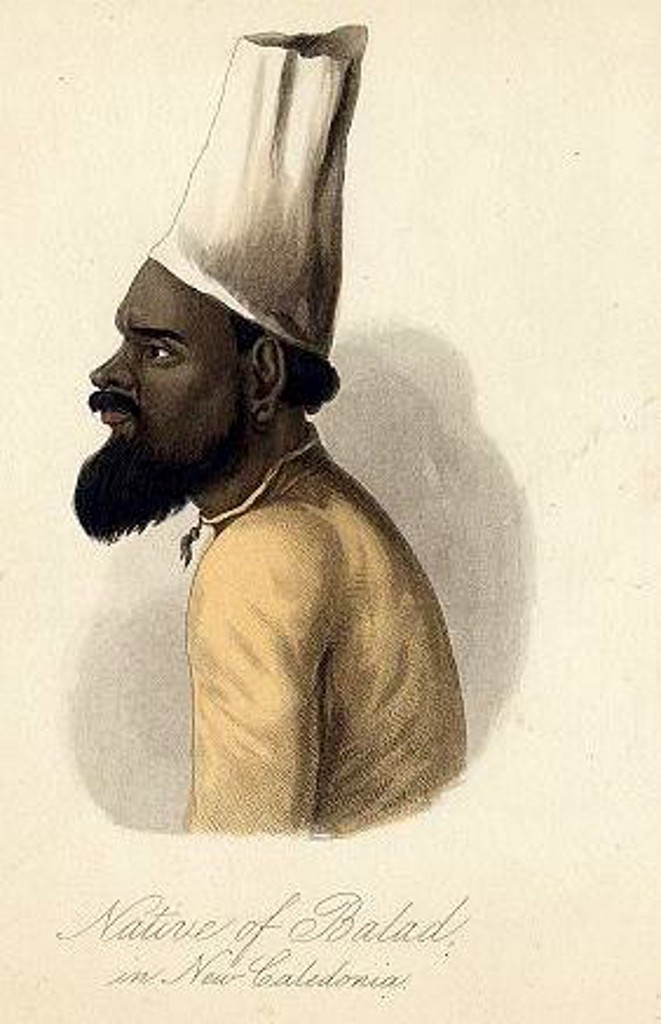NATIVE OF BALAD IN NEW CALEDONIA
A Native of Balad in New Caledonia engraved by J. Bull, published in James Prichard's The Natural History of Man, 1855.
Aquatint with original hand colour. Size 19 x 12 cms including title, plus margins.
Texte extrait du livre page 469-470
Télécharger l'extrait de ce texte du livre ici en format PDF (132 MO)
Le livre complet est téléchargeable ici au format PDF
Aquatint with original hand colour. Size 19 x 12 cms including title, plus margins.
Texte extrait du livre page 469-470
"Capt. Erskine describes the New Caledonians as a fine and intelligent race of men, black, woolly-haired, and resembling the Fijis in general appearance. The figure in the opposite plate, the portrait of a man of the district of Balad, is from his portfolio. The women were much under subjection to the men, but they were not restrained in their intercourse with the whites, in the course of which they conducted themselves with strict propriety. On the banks of the river up which the party proceeded, they found "neat trimly-kept houses, standing often in very beautiful situations on its banks, with well-constructed landing-places, and a few trees placed in regular order on what appeared to be mown lawns The face of the hills above the river is covered with rectangular fields, surrounded by channels for irrigation, which, as far as can be seen from below, is conducted on a careful and scientific system, levels being carried from the streams, which, at this season of the year, afterwards flow into the river at intervals of a quarter of a mile" . In the course of the day, he saw some poles with heads upon them, which he was informed were those of women put to death for breaking the tabu,—a decided Polynesian characteristic. The natives had scarcely any covering but a mere girdle, though they appeared to suffer from cold and wet, and were very probably restricted to this deficiency of dress by want of means, for the chief and his brother wore frocks; and one of the people was detected in the attempt to steal a seaman's shirt. Some of them wore a sort of cylindrical hat, not unlike the paper cap used by carpenters at their work, and many frizzled their hair out behind into a globular queue. Mr. Inglis says they use a large mat, of a size sufficient to cover them completely when it is cold or rainy: this was not seen by Captain Erskine, but in an island 240 miles long there must be variety of usages. He further states that "they manufacture coarse earthen pots for the cooking of food, similar but inferior to the earthenware made by the natives of the Fiji islands; thus furnishing one proof of the relationship or common origin between the natives of the two groups".
Télécharger l'extrait de ce texte du livre ici en format PDF (132 MO)
Le livre complet est téléchargeable ici au format PDF
